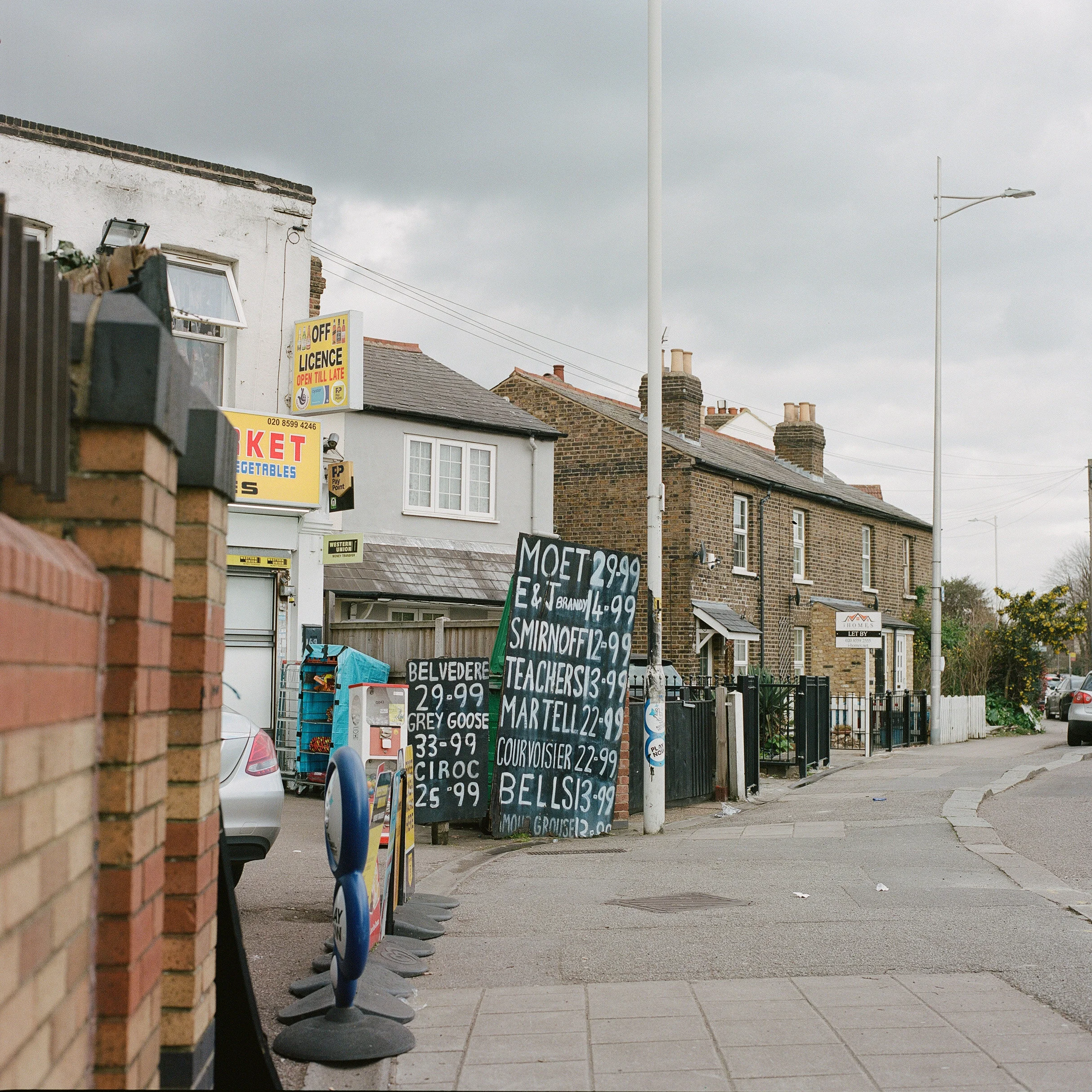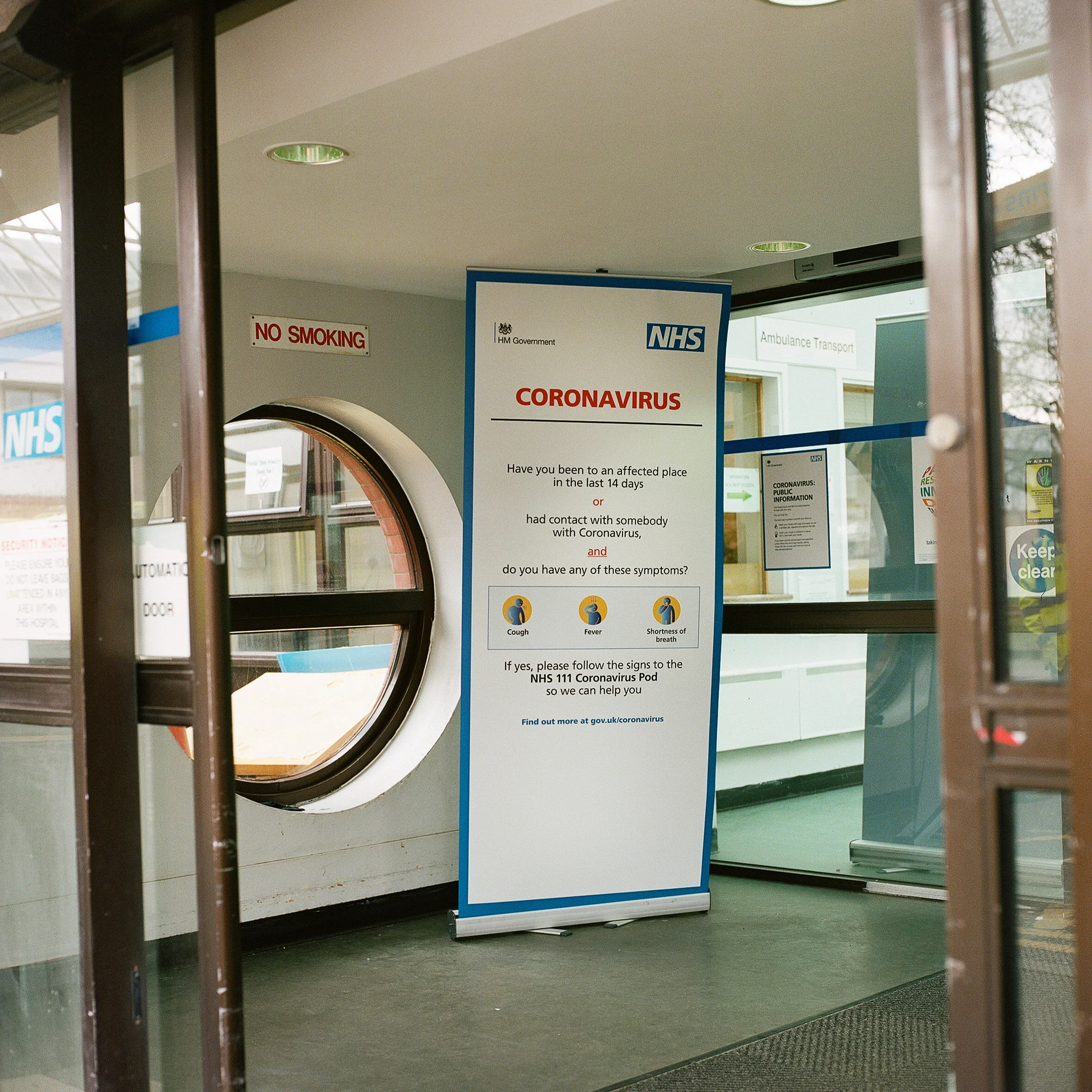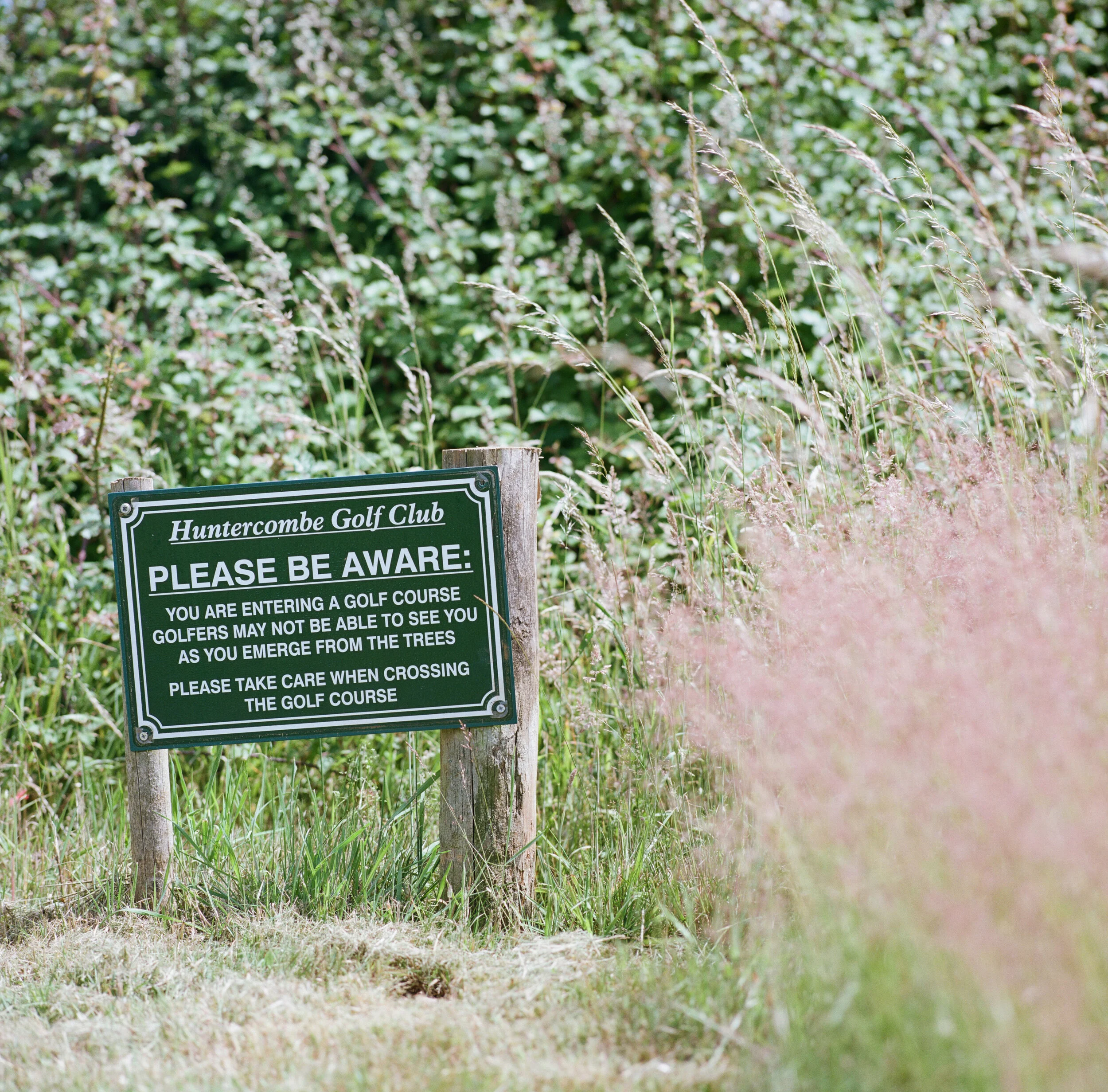The Thrill Of The Shoot; Anxious times for photographers.
Living in Fear
I am trying to decide if I think that there are any approaches to photography that do not involve some level of anxiety. I do not mean taking fun photos as a hobbyist, or making holiday snaps, but when you are working to a client brief or building a collection that you hope will resonate with an engaged audience.
Alas, we are living in anxious times, and here is a reminder of just a few of the things that have happened at home, and abroad since the inception of this project:
Jamal Khashoggi, a Saudi journalist based in the US was murdered in the Saudi Embassy in Turkey
Various natural disasters have occurred, including the devastating wildfires in Australia earlier this year
Greta Thunberg has become a household name
Very recently the Black Lives Matter movement has gained huge momentum following the death of George Floyd in America
I always thought the environment was the biggest issue facing humanity, and to be honest I still do; people will live and die, but the planet is likely to continue to adapt with or without us.
So many ‘large events’ are reported during the average person’s lifetime, but apart from war, they usually pass through the news relatively fast, and interest in them dwindles as time passes. At the beginning of 2020, as a nation, we were busying ourselves with thoughts of what would happen once a Brexit Deal is agreed (or not) but then came the pandemic. The longer-term impact of Covid-19 (job loss, recession, preventable deaths from other diseases…) is daunting, yet not fully known.
In February and March as the news from China was filtering through to the public via a seemingly unworried Prime Minister, the population knew things were about to change. It was in that state of mild fear and uncertainty that I last went out with the camera prior to the lockdown (Friday 13th March). I wanted to capture something of the anticipation of what lay ahead, and I had a hunch I wouldn’t be able to go out for a while. Looking at the map, I had located both a care home for the elderly and a hospital within the area of Little Heath which is ten miles east of base. Many people were already working from home, and businesses were putting up signage regarding cleanliness, and what to do if you were showing symptoms of having contracted Corona Virus.
Little did I know how badly care homes would be affected by the corona virus, but indications were that people over seventy were more vulnerable to it’s effects. I was looking specifically for some signage that indicated what was happening, and headed to the care home. There was indeed a sign on the door regarding procedures related to Covid-19. It seemed right to ask permission to take a photograph: not only was the nation gripped with anxiety, but it would seem odd to set up a camera near the entrance to a care home, and a Hasselblad is not one bit discreet. I rang the buzzer and spoke to a member of staff. She rang through to the management, and I was told if the sign had the company logo on it, then I could not take a picture. It had a logo, so that image never materialised.
I reset my agenda and meandered through Little Heath en route to King George Hospital. Little Heath seemed a funny little place, with the intense roar of Eastern Avenue on one side, some small terraced houses, and New City College, which was spilling out with cheery youths as I walked by. I am sure it has more of a soul, but anywhere can seem odd when you don’t know it. I shall return.
A wander through Little Heath
The hospital complex was spread across various buildings, and I beheld a sight I wish I could have captured on film: a woman talking intently on her mobile whilst waiting for a bus: she was wearing gloves and a face-mask, which at this time was still a rarity. I would have needed her interaction to get a decent image, so I had to let the moment pass, and moved closer to the main building. It was a hive of activity; inpatients stepping out for a cigarette, people looking slightly lost as they navigated their way to the right department, and a bunch of men carrying out cleaning of the glass roof from a cherry-picker: this looked to me like a ’how many men does it take to clean a roof?’ kind of scenario! Health and Safety at play no doubt. A little banter ensued, as I tried to work out what to photograph, whilst keeping my distance from others. I sized up an image from outside the automatic doors, and waited as people went in and out of the hospital. Then I thought I’d try my luck and have a nose into the foyer. Within seconds a friendly security guard came to ask what I was doing, and informed me that there was no authorisation for people taking pictures at this time. I nodded politely, and went on my way, happy in the knowledge I had already taken the picture I wanted.
The Early Signs.
Whilst I am in a confessional mode, I’ll tell you about a prison I sought out on my most recent trip, to a ‘nowhere’ kind of place called Nuffield, near Henley on Thames. Before heading to any destination I have a look at the paper map which is where my crude markings are, and also, a map on my computer where I work out the distance more precisely. It gives me a chance to see if anything interesting stands out, and on this occasion, a prison presented itself: I did some research and discovered that this prison started life as an internment camp during World War II, and has seen several manifestations since. It is now a prison for over 400 foreign national men, mostly serving out their time before deportation.
Nuffield Common is set in the Chiltern Hills, area of outstanding natural beauty, and where the ancient Ridgeway Path is sliced by the A4130. Stepping off the bus on the fast road, there was a patch of concrete and a dilapidated pub which looks to have closed a long time ago. Just behind that runs a little alley with a discreet sign signalling The Ridgeway Path. Within moments you find yourself on a golf course with signs warning you to be careful as “golfers may not be able to see you as you emerge from the trees” Quintessentially english I feel!
The prison was my last port of call that day which was to be found down a lane which lies on the other side of the main road. The lane was much like any english country-road, with trees either side, and fields which became visible any time there was an opening. There were a couple of private homes set back from the road, and there is a National Trust property: Nuffield Place which was the home of William Morris, not the textile designer, but the man who brought us the Morris Minor motor car amongst others. He was a philanthropist, donating the equivalent of £700 million in today’s money. Nuffield Place was his home for thirty years, until his death in 1963. The house was closed due to Corona Virus. According to the map there was a home for the elderly on the other side of the prison, meaning all visitors and staff had to go through the prison grounds to reach it - most bizarre!
The approach to the prison was very discreet and before I knew it I was stood within the prison grounds. The main building was less than 100 metres from where I was, and the first thing I noticed was a visitors building to my right, which seemed so run down I wondered if it was still in use.
I cannot pretend I wasn’t a little nervous as I snooped around the small building, and read the sign about leaving any drugs you had on your person in a metal box. You find yourself (I don’t think I would be alone in this) asking yourself a load of questions in rapid succession ‘can I take a photo? should I be here? How come it is so easy to walk in, am I on CCTV?’ etc. All at the same time as trying to figure out what would make a good shot. I decided I should grab a shot of the drug bin, in case that was my only photo-opportunity. If I was shooting this project on my Nikon the picture would have been taken within seconds, but for those who don’t know, the view into a Hasselblad is reversed, and levelling the camera can take (me) some time. That means whenever I am photographing something, it takes enough time to be noticed. Anyway, I rushed the shot, and managed to catch my reflection in a window, even though I spotted that once and moved, but I had missed the other angle. This was never going to be a prize winner.
Last Chance: a cropped version.
With the camera on a tripod, it was clear I was not trying to hide anything, so I thought I would do a bit more investigating to see if there was anyone to ask if there was something I could photograph: the laundry room sign had caught my eye. No such luck, as someone else’s eye had caught me! There were several cars coming and going from the area (residential home visitors included) and one pulled up near me. Inside was a middle aged man and a very young woman (I could only think daughter, work experience?). The driver wound down the passenger window, and asked ‘do you mind letting me know what you are photographing’. Enter the verbal gymnastics! I told him nothing really, and tried to quickly explain the project, saying that I noticed there was a prison in this area, and that this area had been assigned as part of the project. I also said that I figured I couldn’t really take pictures within the prison grounds, but had hoped I may have found a view from afar. I think he just said “no, you can’t take pictures of prisons” The young woman sat there smiling, and seemed bemused by the exchange. I said okay and turned on my heel to leave the confines of the grounds.
Do you think I just walked back down the road from where I came? Afraid not. I wouldn’t call this an act of defiance, but I am quietly determined, and I had travelled far to find this image… I took a left turn down a little lane that led to (as I recall) a couple of houses on the right, and one more at the end of the lane before it narrowed into a path flanked by hedgerows. I did not follow the narrowing path for long, but it was fully open to the public, and part of the garden adjoining Nuffield Place was adjacent to where I stood. However, on the left was a rough open space that was hard to fathom: part concrete, part grass, and a hint of it being used as a carpark, maybe as an overflow when Nuffield Place gets busy. I could see a small amount of metal fencing amongst the foliage, and recognised it as the perimeter of the prison. I entered the space, trying to seem as relaxed and inquisitive to the area as possible - I do remember looking up to the sky, as if to spot birds: Red Kites are prolific in this part of the country. I set the camera up facing away from the fence, took a light-meter reading and had a drink of water - it was another hot day! I imagined again if I was being watched somehow, wondered what the man in the car would make of my actions, and proceeded to make a picture. I then walked back the way I had come, exchanging greetings with one of the local residents, and waited for the bus back to Henley on the main road.
Around mid-May the whole world was still adjusting to what is commonly referred to as the new normal. I have my reservations about using that term.
Restrictions in England had lessened, meaning people could be outside for as long as they wanted. I was itching to get out and take some pictures, but I didn’t know what to expect when I did venture out. I was in no hurry to use public transport, so on 28th May I saddled up and rode my trustee workhorse five miles to the vicinity of Snaresbrook. It was a really hot day, and I enjoyed a fantastic cycle along the New River. I got off the path where the canal meets the Lea Bridge road, and I was really impressed with the cycle route which took me all the way to my destination, and which deems cyclists as priority traffic. Progress!
I stopped not far from Hollow Pond which is on Whipps Cross Road and headed for a Hindu Temple I knew was there, speculating on images. There was a man sat outside in the sunshine, looking wonderful in traditional Hindu dress, but I was still wheeling my bike, as it was proving hard to find somewhere to lock it. I walked down a side alley and stumbled upon some residential streets, but failed to find a post thin enough to get my lock around. Returning to the main road, and across to the green space that I fail to find a name for: I always thought it was part of Wanstead flats, but I was wrong, I locked my bike to a signpost, and headed back toward the temple. I really hadn’t gathered my thoughts by this point, although I did have my camera set up on the tripod as I ambled along the pavement in the heat. An old guy walked past me, pushing a wheelchair and wearing a t-shirt emblazoned with words. We exchanged smiles. He looks like he is up to something I lazily thought, then ping! My brain engaged fully and I realised that a great looking character had just passed me by. I turned on my heel, and walked faster to catch up with him. Once I was close enough, whilst keeping my distance, and with the extra consideration of his age, I got his attention and indeed asked ‘what are you up to?’. Peter Murray is his name, an eighty five year old man who has tasked himself with walking 1000 miles to raise funds for Whipps Cross Hospital as a thank-you to the staff there who helped his 87 year old sister survive Corona Virus. We spoke at length; he told me something of his life, and asked that I promoted his cause via social media, which I dutifully did. I also donated to his GoFundMe page which you can do too if you feel the urge. He also said that he wanted to marry me, but I let him off on account of the heat!
Images sometimes come as a gift. Of course if there is a person involved, it is what they offer which bestows the gift.
And so, that first trip out proved a success. I met and photographed two St. John Ambulance nurses during their lunch break, and a guy who had driven down from the Midlands (definitely not allowed). He was out with his teenage nephew and we had a most stimulating conversation about the 5G network. He was certainly on the side of conspiracy theories (my opinion) and his nephew explained how radiation worked, and that the amount of radiation emitted from 5G is negligible and that the theory of it causing Corona Virus was “bullshit”. The uncle also asked me if I knew who David Icke was, and we touched on the subject of reptilian humanoids. We are all in it together!
It turned out that I needn’t have worried about that first trip out - I had further conversations with people along the way, so I guess everyone was just happy to be out and amongst it, conversing with their fellow humans.
Nonetheless, as I said at the beginning, these are anxious times (like it wasn’t bad enough already) but apart from the anxiety of making a living from photography, the actual image-making process mostly offers an adrenaline rush in the way of a high, rather than a negative anxiety. Shooting on film with a fifty year old camera that has it’s foibles can induce a level of anxiety, but the thrill can be equally addictive!
Keep it pumped!
Amanda xx








